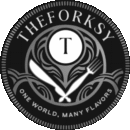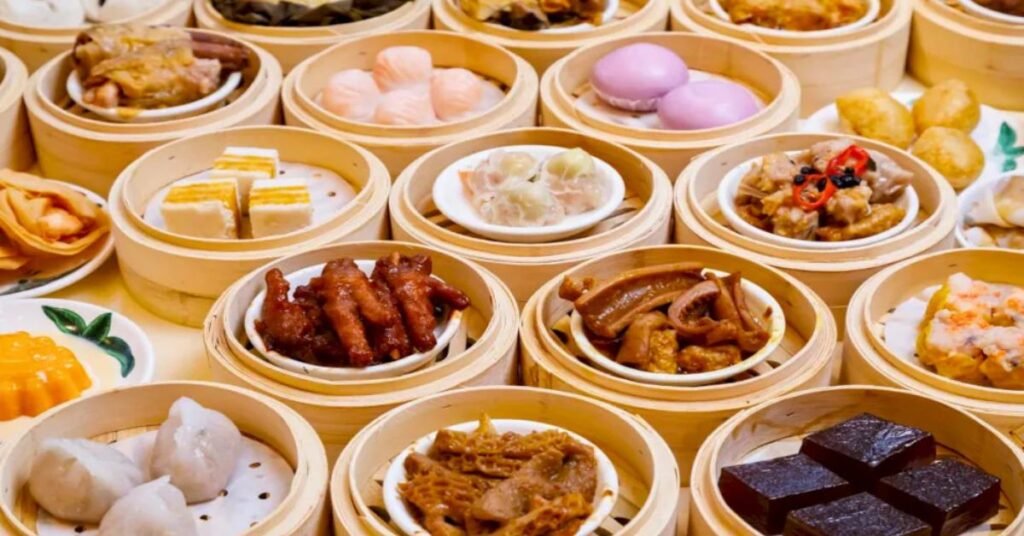Hong Kong is often called a food paradise, and for good reason. The city blends traditional Chinese flavors with international influences, creating one of the world’s most diverse food cultures. From sizzling street stalls to refined dim sum halls, Hong Kong foods are as vibrant as the city itself.
This guide explores the best Hong Kong foods, not only within the city but also in global food hubs like Auckland and Boston. You’ll discover authentic dishes, cultural insights, and even modern interpretations that bring Hong Kong’s culinary spirit to life. Whether you’re a traveler, foodie, or home cook, this article will help you understand and enjoy Hong Kong cuisine like never before.
Chinese Hong Kong Food
Chinese Hong Kong food is the foundation of the city’s culinary scene. Dim sum is perhaps the most famous, featuring small plates of dumplings, buns, and rolls served with tea. Popular items include siu mai (pork dumplings), har gow (shrimp dumplings), and char siu bao (barbecue pork buns).
Cantonese roast meats are another highlight. Crispy roast duck, char siu, and soy sauce chicken are staples in Hong Kong eateries. They showcase the balance of sweet, savory, and umami flavors that Chinese Hong Kong food is known for.
Noodle dishes like wonton noodles and beef brisket noodles also hold a special place in everyday meals. They are simple yet deeply satisfying, reflecting the comfort food tradition of Chinese Hong Kong cuisine.
Authentic Hong Kong Food
Authentic Hong Kong food reflects the city’s history as a cultural crossroads. Egg tarts, inspired by Portuguese pastéis de nata, are a sweet pastry loved by locals and tourists alike. Pineapple buns, despite the name, contain no pineapple but are topped with a golden crust that adds sweetness and crunch.
Claypot rice is another authentic dish, cooked with meats like Chinese sausage, pork, or chicken. The crispy rice at the bottom of the pot is a delicacy in itself.
Authenticity also shines in congee, a rice porridge served with toppings like preserved egg, pork, or fish. It’s a humble yet heartwarming dish that reflects Hong Kong’s food traditions.
Auckland Hong Kong Food
In Auckland, New Zealand, Hong Kong food has found a strong following. The city’s multicultural population has created a vibrant dining scene where Hong Kong cuisine thrives.
Dim sum restaurants in Auckland serve classic dishes like har gow and cheung fun, while bakeries offer egg tarts and pineapple buns. Many eateries also serve fusion dishes, combining Hong Kong flavors with local New Zealand ingredients.
For Aucklanders, Hong Kong food is both a connection to heritage and a popular choice for those seeking authentic Chinese dining experiences.
Hong Kong Food Boston
Boston is another city where Hong Kong food has a growing presence. Chinatown in Boston offers a range of authentic Hong Kong dishes, from roast meats to dim sum.
Students and travelers often seek out Hong Kong-style cafes, known as cha chaan tengs, where they can enjoy milk tea, pineapple buns, and curry fish balls. These cafes bring a slice of Hong Kong’s casual dining culture to Boston.
For locals, exploring Hong Kong food in Boston provides both comfort and novelty, making it a vibrant part of the city’s food culture.
Hong Kong Food Culture
Hong Kong food culture is shaped by diversity and adaptability. The city has absorbed influences from Britain, Portugal, and beyond while maintaining its Chinese culinary roots.
Meals are often social events, with families gathering for dim sum or hot pot. Street food stalls are equally important, serving snacks like egg waffles and curry fish balls. These affordable treats capture the fast-paced, energetic lifestyle of Hong Kong.
Tea culture is also central. Hong Kong-style milk tea, strong and creamy, reflects the British influence while remaining uniquely Hong Kong.
Hong Kong Food Dishes
Hong Kong food dishes range from humble snacks to elaborate meals. Some must-try favorites include:
- Char siu bao (barbecue pork buns)
- Wonton noodles
- Roast goose
- Claypot rice
- Egg tarts
- Pineapple buns
- Curry fish balls
Each dish tells a story of tradition, creativity, and cultural blending. Whether eaten at a street stall or fine dining restaurant, Hong Kong dishes offer a taste of the city’s culinary identity.
Elements Hong Kong Food
Elements of Hong Kong food reflect balance, texture, and flavor harmony. Sweet and savory often coexist, as in char siu or sweet-and-sour pork. Texture is equally important, with crispy, chewy, and soft elements often combined in one dish.
Another element is the use of sauces. Oyster sauce, soy sauce, and hoisin sauce are staples that give Hong Kong foods their distinctive taste.
Lastly, the communal nature of dining is an essential element. Sharing plates encourages connection and reflects the social fabric of Hong Kong dining.
Exotic Hong Kong Food
Exotic Hong Kong foods often surprise outsiders but are cherished by locals. Snake soup, for example, is considered a delicacy and is believed to have health benefits. Bird’s nest soup, made from the nests of swiftlets, is another exotic yet treasured dish.
Offal dishes, such as beef tripe or pig’s liver, are commonly served at dim sum or noodle shops. While exotic to some, they reflect the resourcefulness and culinary creativity of Hong Kong chefs.
Eco Botanic Hong Kong Food
Eco Botanic Hong Kong food refers to sustainable and environmentally conscious dining trends. Many restaurants are now focusing on using locally sourced produce, reducing food waste, and promoting plant-based alternatives.
Some eateries are modernizing traditional recipes with eco-friendly practices, such as using organic vegetables in hot pots or offering vegetarian dim sum options. This reflects a growing awareness of health, sustainability, and responsibility in Hong Kong’s food culture.
Practical Takeaways
Exploring Hong Kong food is a journey into culture, tradition, and innovation. Start with classic dishes like dim sum or wonton noodles to experience the heart of the cuisine.
When traveling abroad, look for Hong Kong restaurants in cities like Auckland or Boston to enjoy authentic flavors outside Hong Kong. Experiment at home with simple recipes like egg tarts or milk tea to bring the taste of Hong Kong into your kitchen.
Most importantly, remember that Hong Kong food is meant to be shared. Whether it’s claypot rice with friends or dim sum with family, the joy lies in both the flavor and the connection it creates.
Conclusion
The best Hong Kong foods reflect a unique blend of tradition, authenticity, and cultural exchange. From street snacks like curry fish balls to refined dishes like roast goose, every bite carries a piece of the city’s identity.
Globally, Hong Kong food has traveled far, finding homes in Auckland, Boston, and beyond. Its adaptability and vibrancy make it one of the world’s most exciting cuisines.
Whether you are in Hong Kong, abroad, or in your own kitchen, exploring these dishes allows you to taste the history, creativity, and culture of a truly remarkable city.
FAQs
1. What food is Hong Kong most famous for?
Hong Kong is most famous for dim sum, roast meats like char siu and roast duck, as well as sweet treats such as egg tarts and pineapple buns.
2. What are some authentic Hong Kong foods to try?
Authentic Hong Kong foods include claypot rice, congee, wonton noodles, and cha chaan teng favorites like milk tea and curry fish balls.
3. Is Hong Kong food available outside of Hong Kong?
Yes, Hong Kong food is popular worldwide. Cities like Auckland and Boston have thriving Hong Kong-style restaurants and bakeries offering dim sum, egg tarts, and roast meats.
4. What makes Hong Kong food culture unique?
Hong Kong food culture is unique because it blends Chinese traditions with global influences from Britain, Portugal, and beyond, resulting in diverse and adaptable dishes.
5. Are there exotic Hong Kong foods?
Yes, exotic dishes include snake soup, bird’s nest soup, and offal-based meals such as beef tripe, which are considered delicacies in Hong Kong.
6. Is Hong Kong cuisine moving toward sustainability?
Many modern Hong Kong restaurants are adopting eco-friendly practices, offering plant-based dim sum, using organic produce, and reducing food waste to promote sustainability.

